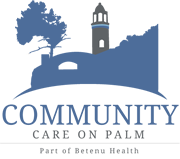
Innovations In Convalescent Care: Technologies And Approaches Making A Difference
26 Jun, 2024
Assisted Living Facilities
Convalescent care, which provides essential services for patients recovering from severe illnesses, surgeries, or injuries, has seen significant advancements in recent years. These innovations, ranging from cutting-edge technologies to novel care approaches, are transforming the landscape of post-acute care and enhancing recovery outcomes. This article delves into the most impactful innovations in convalescent care, highlighting the technologies and methods that are making a substantial difference in the lives of patients and their families.
1. Advanced Medical Technologies
a. Telehealth and Remote Monitoring
Telehealth and remote monitoring technologies have revolutionized convalescent care by enabling continuous, real-time patient monitoring and virtual consultations. These technologies allow healthcare providers to track vital signs, manage chronic conditions, and intervene promptly if issues arise. Telehealth also facilitates follow-up appointments and therapy sessions, reducing the need for in-person visits and making care more accessible, especially for patients in remote areas.
b. Wearable Devices
Wearable devices, such as fitness trackers and smartwatches, are becoming integral tools in convalescent care. These devices can monitor heart rate, physical activity, sleep patterns, and other health metrics, providing valuable data that can be used to tailor rehabilitation plans. Wearables help ensure that patients adhere to their prescribed exercise regimens and alert caregivers to any concerning changes in health status.
c. Robotics and Assistive Technologies
Robotic devices and assistive technologies are enhancing the quality of care and rehabilitation in convalescent settings. Robotic exoskeletons, for example, aid patients in regaining mobility by providing support and resistance during walking exercises. Assistive devices like smart walkers and automated medication dispensers help patients maintain independence and safety, reducing the risk of falls and medication errors.
2. Innovative Rehabilitation Approaches
a. Virtual Reality (VR) Therapy
Virtual reality therapy is an emerging tool in convalescent care that offers immersive, interactive experiences to aid in physical and cognitive rehabilitation. VR therapy can simulate various environments and activities, making rehabilitation exercises more engaging and enjoyable. For instance, patients recovering from strokes can practice movement and coordination in a virtual setting, which can enhance motivation and improve outcomes.
b. Personalized Rehabilitation Programs
Advancements in data analytics and artificial intelligence (AI) have enabled the development of personalized rehabilitation programs. These programs use patient-specific data to create customized therapy plans that address individual needs and progress. By tailoring exercises and interventions to each patient’s unique condition, personalized programs can enhance the effectiveness of rehabilitation and accelerate recovery.
c. Cognitive Rehabilitation
Cognitive rehabilitation focuses on improving mental functions such as memory, attention, and problem-solving skills. Innovative cognitive therapies, including computerized cognitive training and brain games, are designed to stimulate neural pathways and promote cognitive health. These therapies are particularly beneficial for patients with brain injuries, dementia, or other cognitive impairments.
3. Holistic and Person-Centered Care
a. Multidisciplinary Care Teams
Convalescent care has increasingly adopted a multidisciplinary approach, involving teams of healthcare professionals from various specialties. These teams typically include doctors, nurses, physical therapists, occupational therapists, speech therapists, and social workers. By collaborating, these professionals can provide comprehensive, coordinated care that addresses all aspects of a patient’s health and recovery.
b. Family Involvement and Education
Family involvement is a critical component of successful convalescent care. Innovations in care approaches emphasize educating family members about their loved one’s condition, treatment plan, and recovery process. Providing families with the knowledge and tools they need to support their loved one’s care can improve outcomes and reduce stress for both patients and caregivers.
c. Emotional and Psychological Support
Recognizing the importance of mental health in recovery, convalescent care facilities are incorporating more emotional and psychological support services. This includes counseling, support groups, and stress-reduction techniques such as mindfulness and relaxation training. Addressing the emotional needs of patients can enhance their overall well-being and facilitate a more positive recovery experience.
4. Enhanced Facility Design and Environment
a. Therapeutic Environments
The design and environment of convalescent care facilities can significantly impact recovery. Innovations in facility design focus on creating therapeutic environments that promote healing and comfort. This includes the use of natural light, calming color schemes, and outdoor spaces for relaxation and recreation. A well-designed environment can reduce stress, enhance mood, and encourage physical activity.
b. Infection Control Technologies
Infection control is a critical concern in convalescent care settings, particularly for patients with weakened immune systems. Innovations in infection control technologies, such as advanced air filtration systems, antimicrobial surfaces, and automated cleaning robots, are helping to reduce the risk of healthcare-associated infections. These technologies ensure a safer and healthier environment for both patients and staff.
5. Future Directions and Emerging Innovations
a. Artificial Intelligence and Predictive Analytics
Artificial intelligence and predictive analytics are poised to further transform convalescent care. AI algorithms can analyze vast amounts of patient data to predict health outcomes, identify potential complications, and recommend personalized treatment plans. Predictive analytics can help healthcare providers make more informed decisions and deliver proactive, preventative care.
b. Genomic Medicine
Genomic medicine, which involves analyzing an individual’s genetic makeup to guide medical treatment, is an emerging field with significant potential in convalescent care. Understanding a patient’s genetic predispositions can help tailor rehabilitation and recovery plans to optimize effectiveness and minimize adverse effects. As genomic technologies become more accessible, they may become a standard component of personalized convalescent care.
Conclusion
The innovations in convalescent care, from advanced medical technologies to holistic care approaches, are making a substantial difference in the rehabilitation and recovery of patients. These advancements are enhancing the quality of care, improving outcomes, and providing a more personalized and supportive recovery experience. As technology continues to evolve and new approaches are developed, the future of convalescent care looks promising, offering even greater potential to improve the lives of patients and their families.

Leave a Comment